Lecture 2 Development
1/29
There's no tags or description
Looks like no tags are added yet.
Name | Mastery | Learn | Test | Matching | Spaced |
|---|
No study sessions yet.
30 Terms
Why is it important to understand the relationship between info in the nucleus and regularoy moelcuels in the coplasm
key to understanding cell differentiation and its control
exposing differentiated cell nuclues into cytoplasm of another was able to change its pattern of gene expression
Cell fusion experiments
Chick red blood cells with human tumour cells
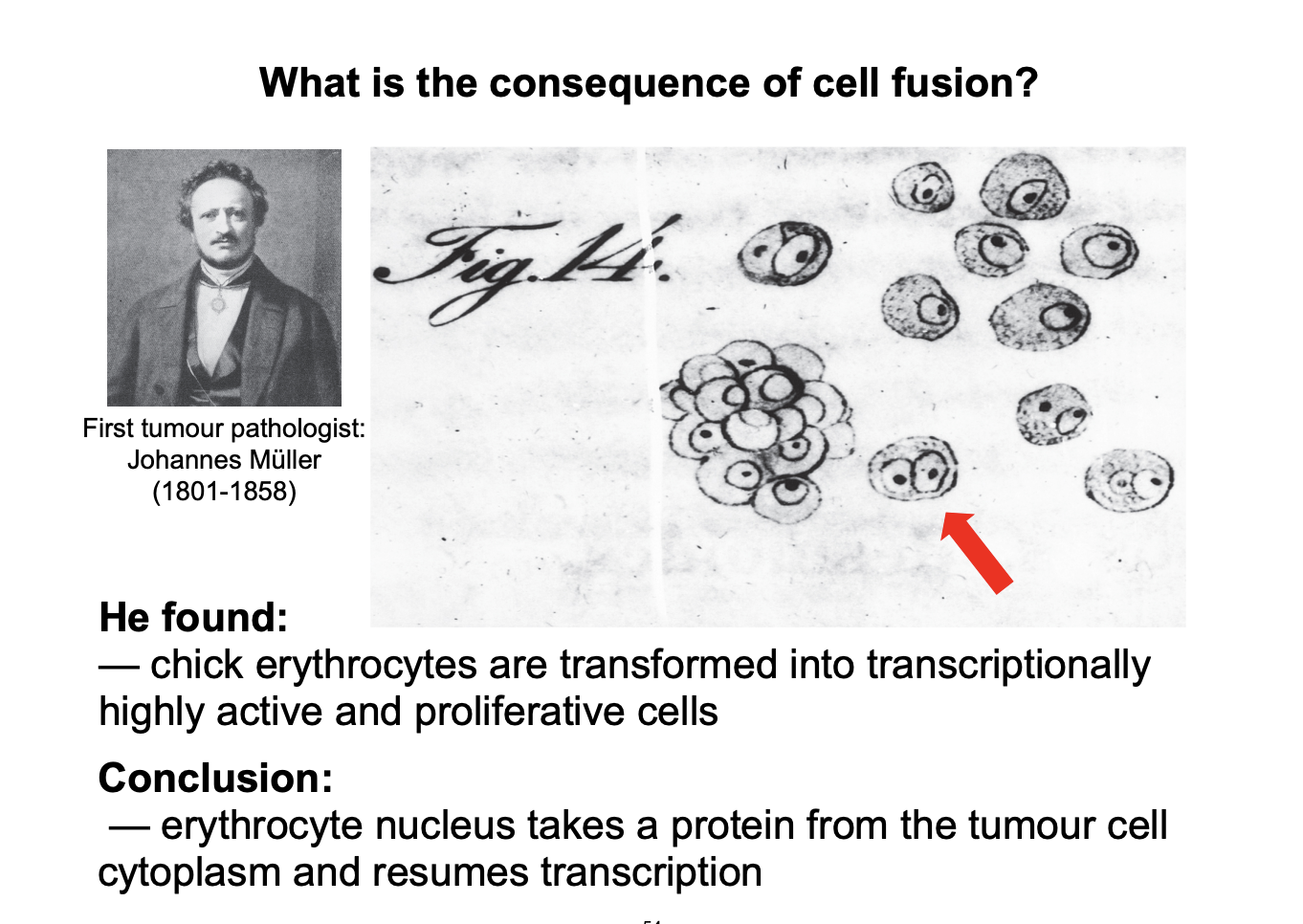
Experiments where nucli exposed to forign cell cytoplasms Experiment 1
E.g Chick red blood cells fused into human cancer cell
→ red blood cell nucleus enlarges
chicke specific proteins begin to be synthesised in the fused cell
THEREFORE: There are clearly factors transferred through the cytoplasm, have reverse in the inactivity of the nuclues
transciption of the chicken genome is reinitiated
conclusion: Red blood cell nucleus takes a protein from the tumour cell cytoplasm and resumes transciption!
Experiemnt 2
Aminocyte→ undifferentiated cell i think?
Put into the cytoplasm of a mouse muscle
the human aminiocyte now extresess its own muscle stuff
So has switched on the muscle genes in the huamn from stuff in the mouse cytoplasm

Experiment 2
Human liver cell fused with a rat muscle cell (large multinucleate cell)
Result:
Expression of human liver-specific genes turned off
transciption of human muscle-specific genes switched on
→ expression of both human and rat muscle proteins can be detected in the fused cell
bascially made the liver cell now express stuff as it it were a muscle cell
Due to stuff in the ctyoplasm of the mouse cell
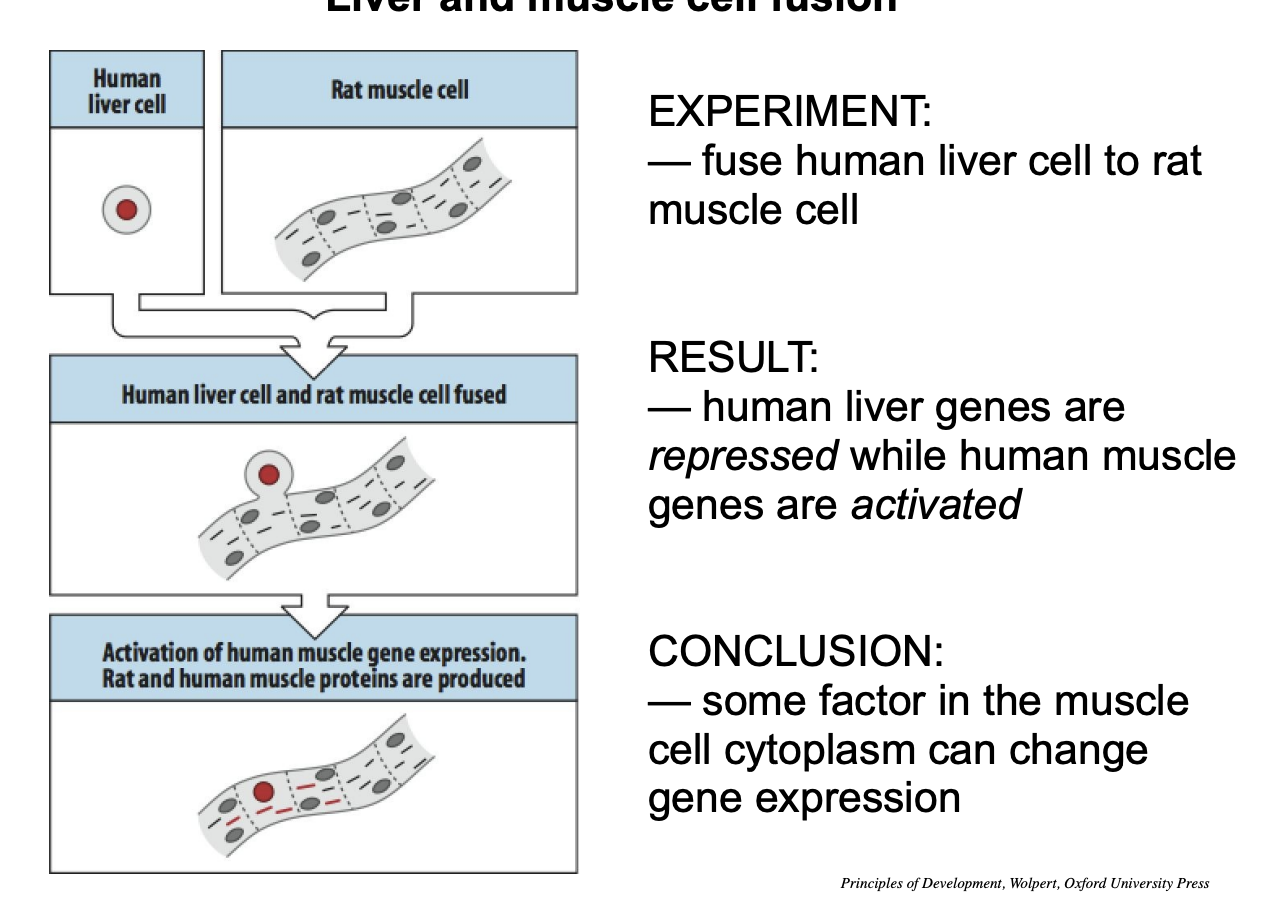
These experiments therefore show
gene expression is regulated by factors present in the cytoplasm of differentiated cell
What are these factors? Experiment 1 method
Transfecting cells with cDNAs made from mRNA taken from proliferating myoblasts
why?: some of these muscle specific mRNAs would encode regulatory proteins controlling muscle cell differentiation!
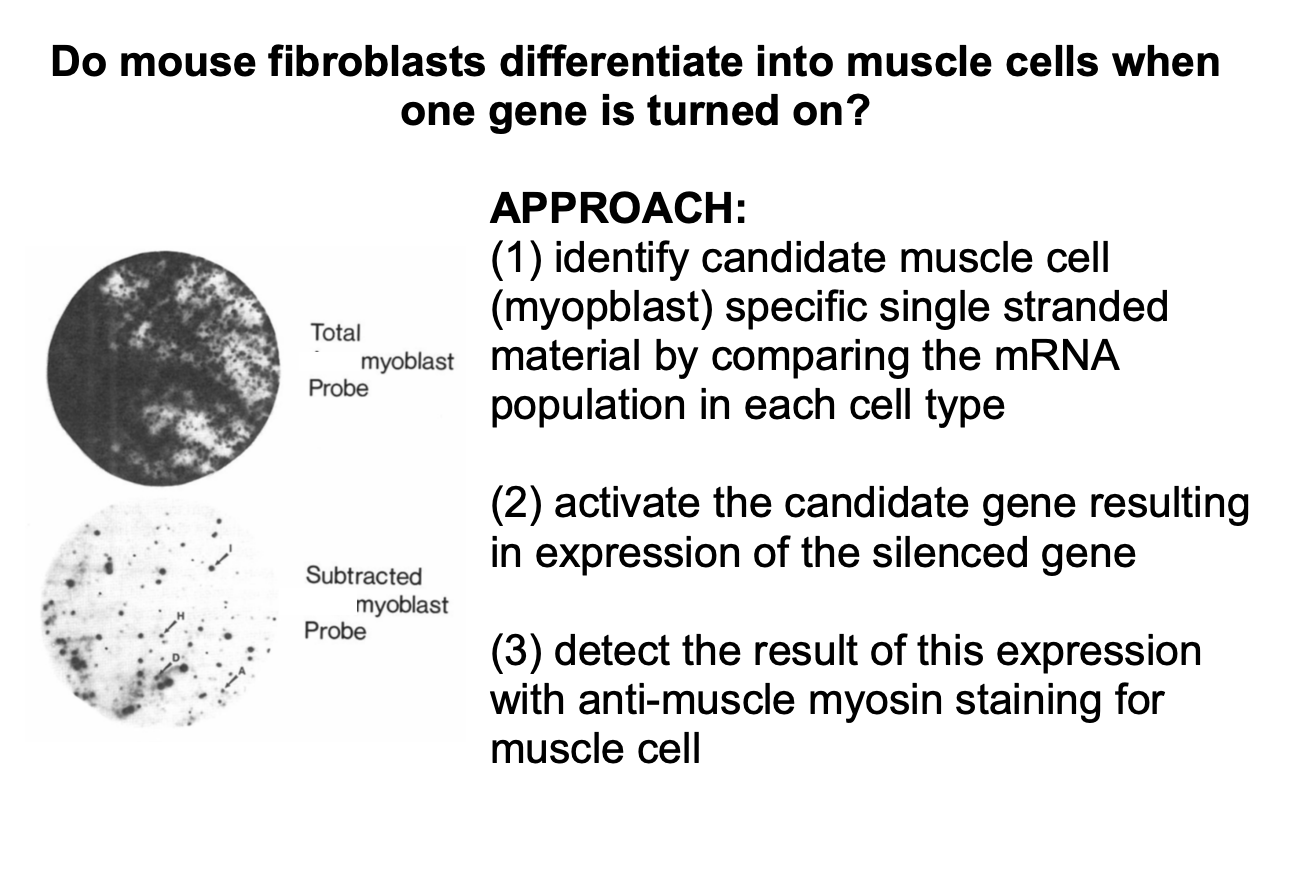
Experiment 1 Results
A single cDNA for a genes (MyoD myogenic differentiation gene)
transfected into differentiated fibroblasts
causes cells to switch fate→ MUSCLE CELLS
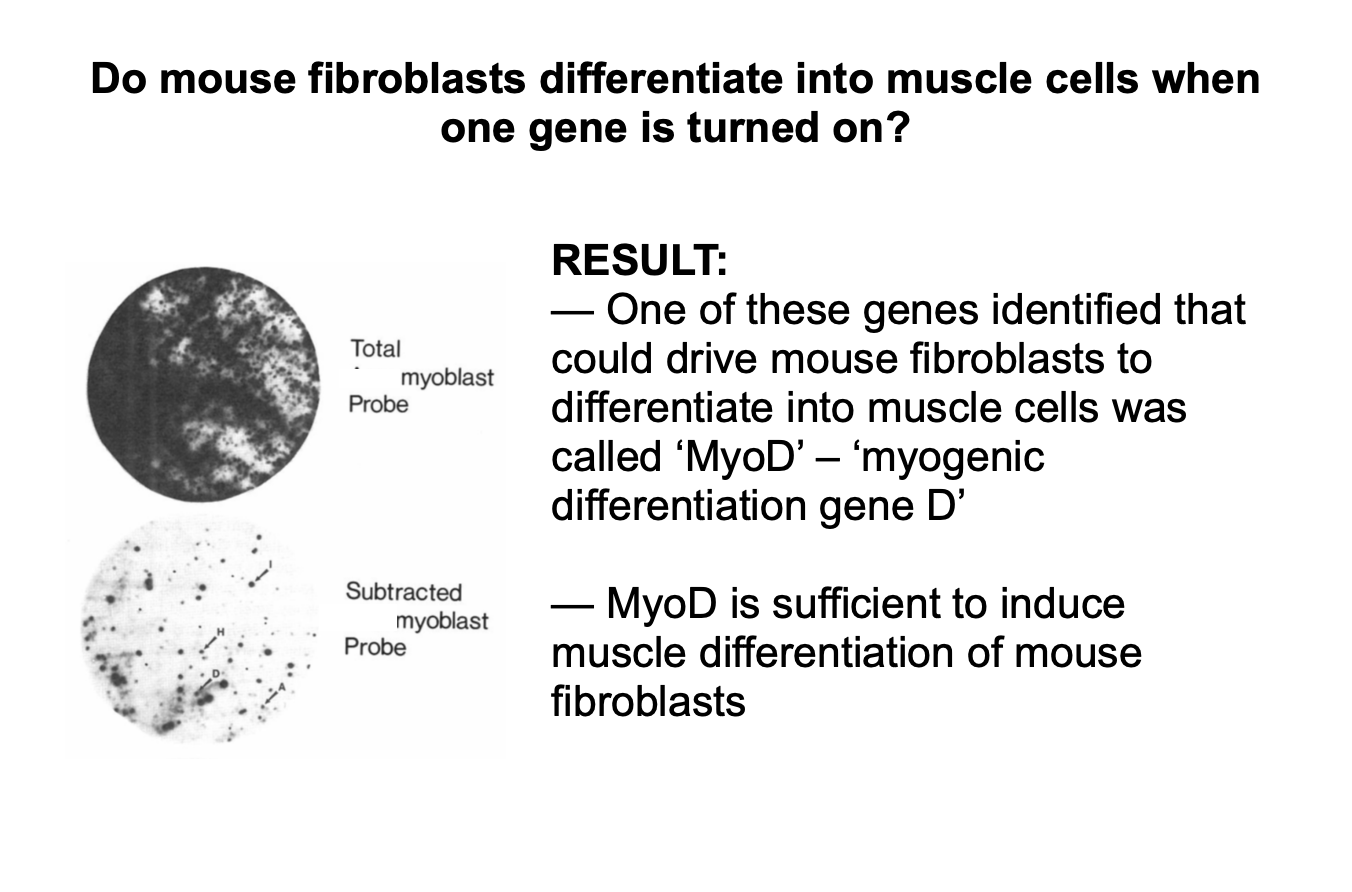
What does MyoD encode for
DNA binding protein transciption factor
binds to the upstream sequences of muscle specific genes
activates them
also
Activates its own transicption
THEREFORE: once started
MyoD preotin ensures that a stable feed back loop operates
maintain the expression of muscle specific genes!
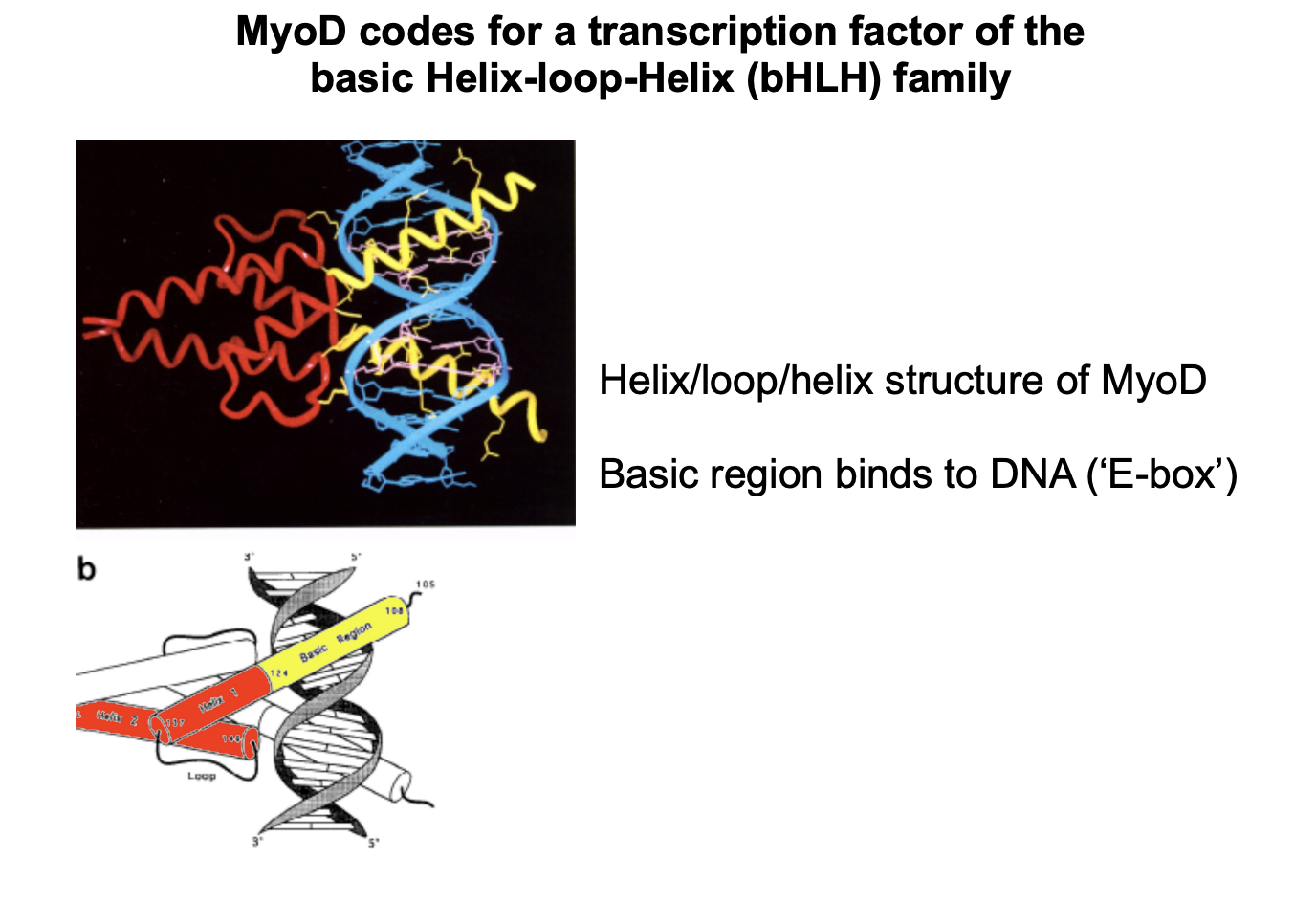
Further information we know about this network with MyoD
combined effect of these factors and other gesn downstream
Creates multiple feedback
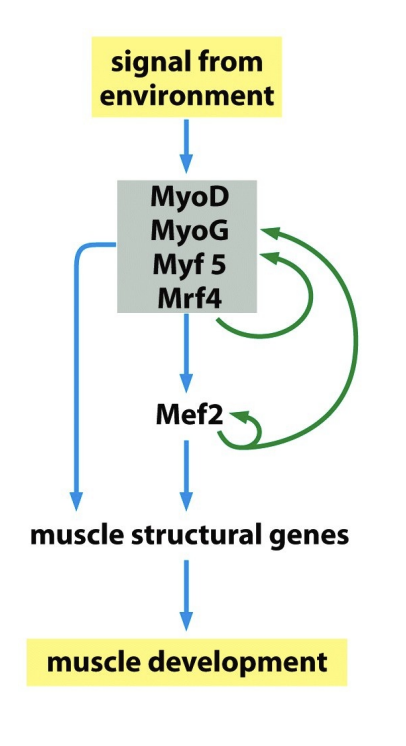
The prescence of multiple feedbacks means
once differentiation is established
it is very stable!
But how do such stabilising loops are initiated as the embryo develops?
e.g for MyoD→ a signal leads to the onset of muscle differentiation
To answer this question need to understand…
how the realtion between nucleus and cytoplasm begins
The beginnings of embryonic development
Prior to fertilisation, mature egg is developmentally paused
fertilisatieon releases the pause→ rapid cell division and DNA replication cleavage
What does celavage result in
each replicated set of chromosomes ecoming associated witha different fraction of the original egg cell cytoplasm
(different processes in Xenopus and Drosophila but the same outcome at hthe end)
In the Xenopus
egg is simply divided into a ball of cells
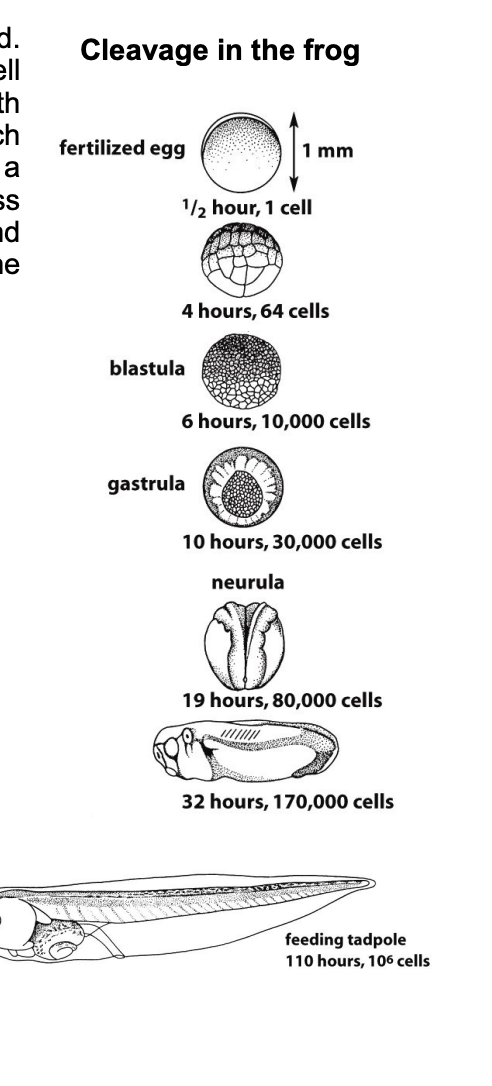
In Drosophila
first replicated without cell division→ form a syncutium
migrate to the surface of the egg
where each nucleus becomes surrounded by a cell membrane

How is this cleavage process programmed into unfertilised egg cell
in maternal gene prouducts (mRNAs and proteins)
put into the egg by the mother
→ sufficient to carry the embryo through the early runds of cell division and nucluear replication
What is the Mid-Blastula Transition MBT
the event when the embryo begins to take charge of its own development
Trasncitpton of the embryonic genomes starts
and also
Cell cycle lengthens
To include a growth phase
rather than repeated cycles of replication
When does this happen in Xenopus?
Until the cell cycle 12
similar event also in Drosophila
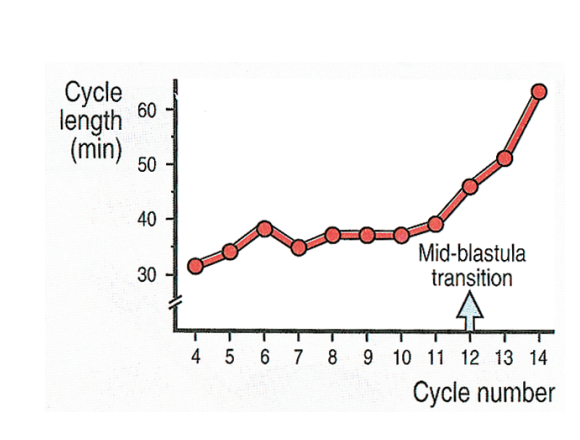
Showing unequal distribution of proteins and RNAs in the egg cell
using antibodies and in situ hybridisation
→ show they are partitioned by cleavage
e.g→ Vg1 transcitps are localised to the vegetal pole of the frog egg→ bright fluoresecence
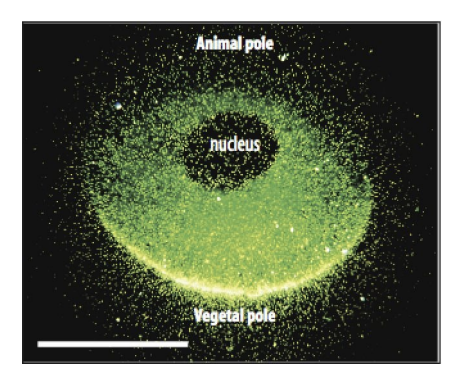
Segregation of protein granules in nematode C.elegans
into germ cells→ future gametes
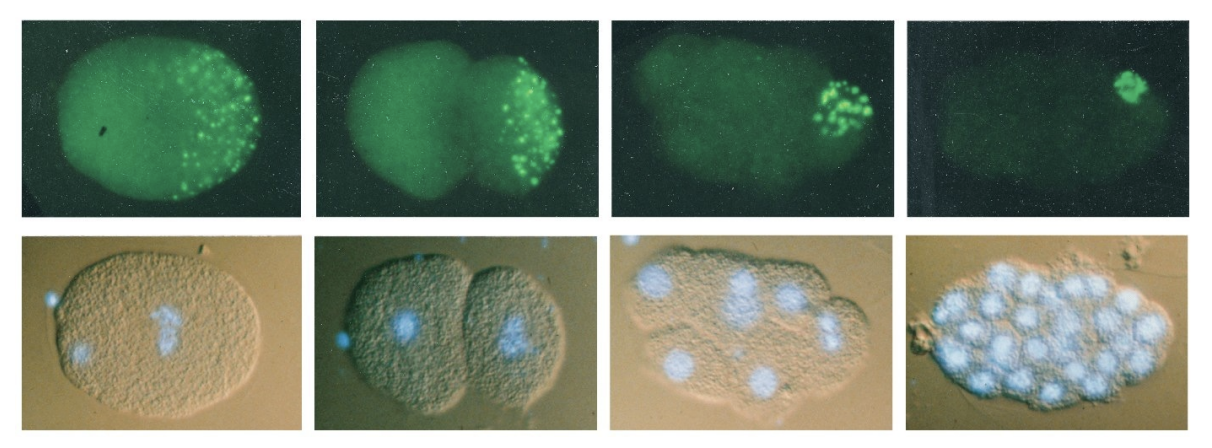
How does this happen?
Asymmetric distribution of the granules in the egg cell
before it begins to divide
Does the unequal distribution of proteins and RNAs in the egg cytoplasm cause a crticial determinat of fate of the cells generated as this cytoplasm is subdivided by cleavage?
Drosophila provides a simple test for this
What the drosophila show
the germ cells in the fly are produced by cells
at the posterior pole of the embryo
→ IS there something special about this part of the egg cytoplasm→ that dictates the formation of germ cells, rather than any ther cell type
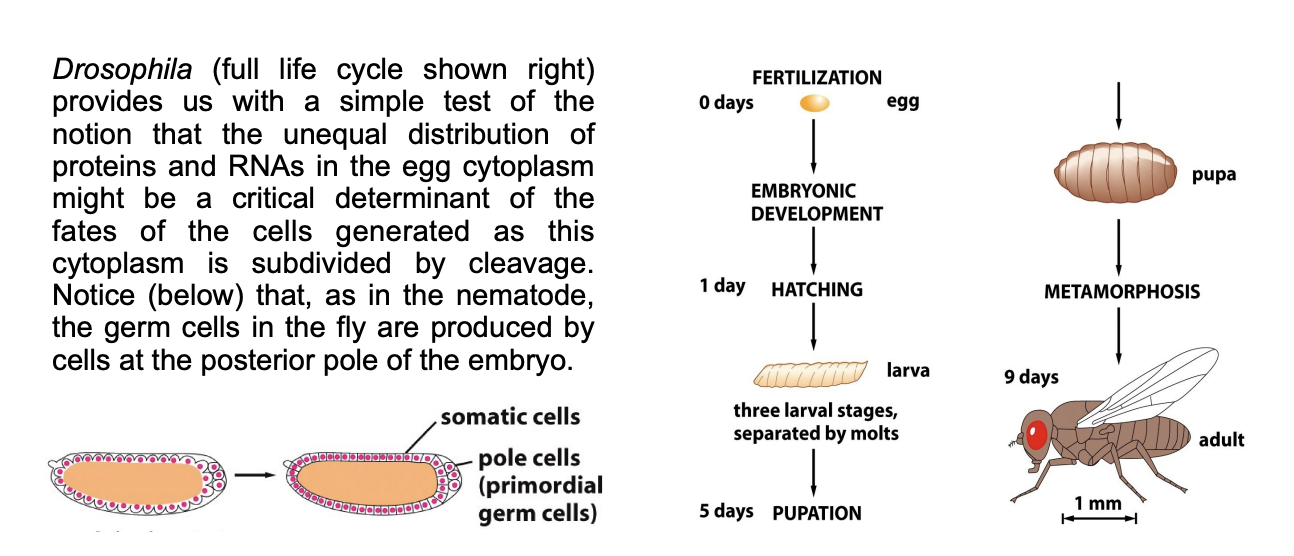
What is unique about what these pole cells include in them
the cytoplasm of the most posterior part of the egg
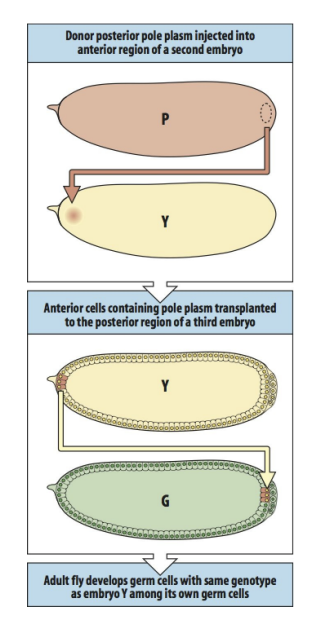
Experiment with pole cells
Posterior cytoplasm is transplanted to an anterior position in another egg
Nuclei at this position normally contribute to head strucuture
BUT→ as the embryo cellularises…
These cells include posterior egg cytoplasm
→ Do they now mark germ cells rather than head strucutures?
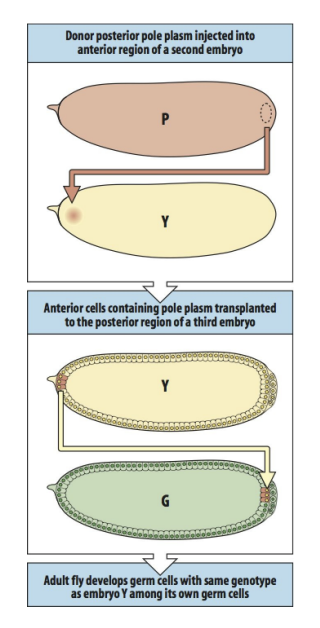
Experiment continued
Yes they do:
clearly shows that there is something in the posterior egg cytosplasm
That dictates germ cell production
When it is included in formaing cells
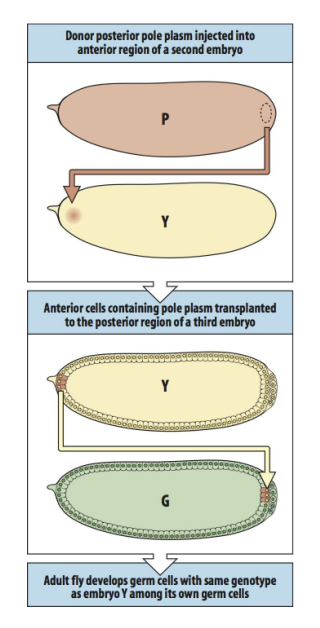
This germ cell deteminant is known to be
theproduct of the gene oskar
Questions to be asked next
how we can find out what is put into the forming egg cell by the maternal genome
how we can identify these factors molecularly